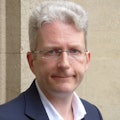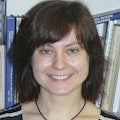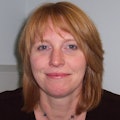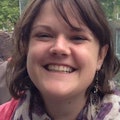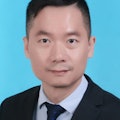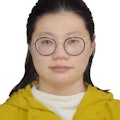The Medical Engineering Group has gained international recognition for its research.
Watch this video.
We are actively engaged in research relating to:
- novel diagnostic imaging and personalised treatments techniques
- advanced medical image and signal processing methods
- medical informatics
- health and sports monitoring
- human motion analysis
We also work to understand how the body responds to trauma, implants and other biomedical technologies.
Our research allows us to engineer solutions that will have positive benefits in the healthcare and sports industries for medical patients. Our activity also impacts the legal profession and the safety of children and society.
We have extensive experience of working with different medical imaging modalities such as Computed Tomography (CT), Positron Emission Tomography (PET), Single Photon Emission Computed Tomography (SPECT) and ultrasound imaging.
We also have extensive experience in:
- underwater acoustics
- human body acoustics
- polynomial matrix algorithms for broadband sensor array signal processing
- body sensor networks
- image and video segmentation
- human motion analysis
- human action and activity recognition
Our research group collaborates closely with several partners in industry and the National Health Service which support our activity in medical research.
Collaborators
We collaborate with a number of organisations and laboratories including:
- Advanced Research Computing at Cardiff (ARCCA)
- Cardiff and Vale University Health Board
- Cardiff University Brain Research Imaging Centre (CUBRIC)
- Cedar Healthcare Technology Evaluation Centre
- Centre for Trials Research - Cancer
- Musculoskeletal Biomechanics Research Facility
- National Imaging Academy Wales
- Research Centre Versus Arthritis
- Velindre University NHS Trust
- Visual Computing Group
- Wales Research and Diagnostic PET Imaging Centre (PETIC)
Featured news
Cardiff and Swansea scan trial targets head cancers.
Research
Personalisation of cancer treatment
Cancer is a major area of activity in our research group. We have an ongoing programme of externally funded, successful research in cancer imaging, personalisation of treatment and treatment outcome analysis.
In addition to the ongoing development of advanced image and data analysis techniques, we are building an IT infrastructure and standardised algorithms that can be included in any machine learning training and validation process. As part of the 'AI Solutions for Personalised Radiotherapy' (ASPIRE) project, Life Imaging and Data Analytics (LIDA), Velindre NHS Trust and Intel Corporation are working on a project aimed at training and validating AI software for the automated delineation of tumour volumes on anatomical and functional imaging modalities.
We are also involved with the development of a fully automated radiotherapy workflow (from AI-based automated segmentation to AI-based automated planning), and development of decision support system for clinicians to use in clinical practice. As large datasets from a broad range of different populations representing the variation in the entire cancer patient population are needed to learn prediction models, we use a federated learning approach designed to address ethical and legal boundaries and to limit the impact of data privacy collaboration between research institutes.
We participate in the European Computer Assisted Theragnostics (EuroCAT) and the Community in Oncology for Rapid Learning (CORAL) projects.
Please contact Professor Emiliano Spezi for more information.
Sensitive, objective and consistent clinical assessments for neurodegenerative diseases
Neurodegenerative disease is an umbrella term for a range of conditions, which primarily affect the neurons in the human brain. Examples of neurodegenerative diseases include Parkinson’s, Alzheimer’s, and Huntington’s disease. Neurodegenerative diseases are currently incurable and debilitating conditions that result in progressive degeneration and/or death of nerve cells. This causes problems with movement (called ataxias), or mental functioning (called dementias).
In clinical practice, these diseases and their symptoms are assessed using a number of special tests, such as Mini Mental State Examination (MMSE) and Clock Drawing Test (CDT) for dementias or Unified Huntington’s (Parkinson’s) Disease Rating Scale (UH(P)DRS) for Huntington’s (Parkinson’s) disease.
Traditionally, these tests are administered by expert clinicians and are assessed on the basis of observations, thus the assessments are limited by inter- and intra-rater variability, subjective bias and categorical design. At the same time, there is ongoing research in more effective treatments for such diseases, thus necessitating the development of more sensitive, consistent and objective means of assessment for disease.
This is an ongoing collaboration with between the School of Medicine and the School of Engineering.
Please contact Dr Yulia Hicks for more information.
Signal processing for health and sports monitoring
We are developing advanced signal processing and data fusion algorithms for analysis of the data obtained with a variety of devices, such as mobile phones, video cameras, inertial measurement units (IMU) and electromyography (EMG) units for sport and health monitoring. The data is analysed and appropriate feedback is provided to the subject and medical professionals in order to monitor the condition of the patient and to develop personalised treatment appropriate for the condition. The applications so far have included Huntington’s disease and lower back pain.
This research is a result of collaboration with the School of Medicine and with the School of Healthcare Sciences.
Please contact Dr Yulia Hicks for more information.
Explaining deep learning models for human action and activity recognition
The popularisation of video surveillance and the vast increase of video content on the web has rendered video one of the fastest growing resources of data. In such videos, humans are arguably the most interesting subjects.
Deep learning methods have demonstrated success in many areas of computer vision, including human action and activity recognition. However, to be confident in their predictions, their decisions need to be transparent and explainable. The aim of this project is to develop algorithms capable of explaining the decisions made by the deep learning methods, specifically when applied to human activity recognition.
This research is a result of collaboration with the School of Computer Science and Informatics.
Please contact Dr Yulia Hicks for more information.
Soft tissue biomechanics
We focus on understanding and preserving soft tissue structure and function, with a major focus on understanding and reducing the consequence of sub-concussive head impacts.
The cumulative effect of sub-concussive head impacts has recently been highlighted across elite sports including American football. We are working alongside relevant industries to develop novel helmet materials that aim to reduce the effect of these collisions, whilst still offering protection again severe brain injuries from higher energy impacts.
Our approach focuses on exploiting the design freedom and material selections afforded by filament-based additive manufacturing. We have recently attracted funding from the US-based HeadHealthTech and the Wales-based KESS II research programmes, while we continue to work alongside leading helmet manufacturers. We collaborate nationally and internationally with universities, clinicians and industry to accelerate our progress and to ensure efficient pathways to translate our new findings.
Please contact Dr Peter Theobald for more information.
Medical engineering in MRI
The Cardiff University Brain Research Imaging Centre (CUBRIC) houses world-class brain imaging facilities including 4 MRI scanners. The main focus of the group's research has been the development of methods for tracking and correcting for motion of the subject being scanned. This is particularly relevant for scans of subjects more likely to have difficulty remaining still during the MR scan, such as children or patients with neurodegenerative disease.
Motion-correction techniques can also be critical for high-resolution research scans where even healthy volunteers are likely to move by a millimetre or two during extended acquisition times - enough to seriously impact image quality when resolutions much less than a millimetre are targeted.
One exciting new approach available for tracking motion is the device from our industrial partners TracInnovations (Denmark) which uses a structured-light camera (similar technology to a Microsoft Kinect but adapted for use in an MRI scanner) to obtain a 3D surface image of part of the subject’s head while they are lying in the scanner. This allows real-time tracking of head-motion without the need to attach any kind of additional marker to the head.
Please contact Dr Daniel Gallichan for more information.
Cancer diagnosis
Another focus for our group is improved cancer diagnosis. Various techniques have been explored to detect and isolate circulating tumour cells (CTCs), in which microfluidic devices provide a unique opportunity for cell sorting and detection. They have been applied for flow cytometry, as well as size- and adhesion-based separation requiring less cumbersome instrumentation.
Prospectively, aptamers integrating with other techniques have been demonstrated as good candidates for the analysis of the single CTC in parallel with capture, ultrasonic and microfluidic technologies in the characterisation and sorting of single CTCs for real-time applications. This project aims to develop a hybrid lab-on-a-chip embracing the three techniques, to characterise single CTCs, with the following objectives:
- Integrating characterisation and isolation in a single lab-on-a-chip, to facilitate real-time and label-free investigation of single CTCs;
- Establishing the initial dielectric signature and model of CTCs, to approach the application of molecular identifications to cancer early detection and personalized cancer therapy;
- Applying the sensor to measure cancer cell samples, to register the dielectric characterisation and understand the cancer biology and metastasis.
Please contact Dr Chris Yang for more information.
Orthopaedic engineering
Current work in this area involves the design development and testing of orthopaedic implants and how they affect the patient. Analysing how the body moves before and after an implant helps us to ensure that the correct implants are used and the correct patient care is given.
One of our main focuses is on exploring the biomechanics of human movement and its biomedical applications to osteoarthritis, joint re-alignment, and joint replacement surgery. We use 3D motion analysis, alongside mathematical models, to quantify the amount of lower limb function restored following total knee replacement surgery
We are part of the multidisciplinary Arthritis Research UK Biomechanics and Bioengineering Centre, which is carrying out research into the causes, effects and treatment of osteoarthritis using the above techniques.
Our fellow researchers are drawn from a wide range of areas, including paediatrics, orthopaedics, pathology, biochemistry and clinical science.
Please contact Professor Cathy Holt or Dr Gemma Whatling for more information.
Forensic engineering
Current research includes the biomechanics of head injuries, shaken baby syndrome, falls and limb fractures, knife wounds, blunt impact trauma and the kinematics of assaults.
Head injuries to children can be caused by falls to playground surfaces, cycling accidents, shaken baby syndrome and other traumas. Through understanding the nature of the injuries and how they occur, it’s possible for us to engineer solutions that can help prevent future injuries.
Research projects include the use of industry leading Solid Body and Finite Element Analysis software to develop a computational model to anatomically and biomechanically represent an infant through key developmental stages, which enables the group to investigate injuries from accidental and non-accidental scenarios.
Other projects involve collaborations with the University Hospital of Wales to investigate the performance of cardiopulmonary resuscitation, and the efficacy of child safety equipment.
Please contact Dr Mike Jones for more information.
Healthcare technology
We also work closely with Cedar, a healthcare technology research centre which specialises in medical device evaluation and brings together Cardiff and Vale University Health Board and the School of Engineering.
Since 2010, Cedar’s main activity has been evaluating medical devices for the NHS National Institute of Health and Care Excellence (NICE). The staff at Cedar are also involved in facilitating clinical trials, the development of patient reported outcome measures (PROMs), providing evidence reviews for health, government and industry organisations, and research collaborations with academics and clinicians in Cardiff and beyond. The researchers at Cedar come from a variety of scientific and health professional backgrounds, and as a team they have expertise in:
- evidence review (systematic reviewing, rapid reviewing, critical appraisal)
- health economics (modelling for decision-making)
- standards and regulation of medical devices
- qualitative research methods (interviewing, surveys)
- medical statistics
- clinical research (interventional trials, registry and data linkage)
- adoption of medical technologies.
Meet the team
Group leader
Academic staff
Postgraduate students
Associated staff
Publications
- Zwanenburg, A. et al., 2020. The Image Biomarker Standardization Initiative: standardized quantitative radiomics for high throughput image-based phenotyping. Radiology 295 (2), pp.328-338. (10.1148/radiol.2020191145)
- Piazzese, C. et al. 2019. Discovery of stable and prognostic CT-based radiomic features independent of contrast administration and dimensionality in oesophageal cancer. PLoS ONE 14 (11) e0225550. (10.1371/journal.pone.0225550)
- Abbas, H. H. et al. 2019. An automatic approach for classification and categorisation of lip morphological traits. PLoS ONE 14 (10) e0221197. (10.1371/journal.pone.0221197)
- Whybra, P. et al. 2019. Assessing radiomic feature robustness to interpolation in 18F-FDG PET imaging. Scientific Reports 9 (1) 9649. (10.1038/s41598-019-46030-0)
- Bennasar, M. et al., 2018. Automated assessment of movement impairment in Huntington's disease. IEEE Transactions on Neural Systems and Rehabilitation Engineering 26 (10), pp.2062-2069. (10.1109/TNSRE.2018.2868170)
- Foley, K. G. et al. 2018. Development and validation of a prognostic model incorporating texture analysis derived from standardised segmentation of PET in patients with oesophageal cancer. European Radiology 28 , pp.428-436. (10.1007/s00330-017-4973-y)
- Berthon, B. et al., 2017. Toward a standard for the evaluation of PET-Auto-Segmentation methods following the recommendations of AAPM task group No. 211: Requirements and implementation. Medical Physics 44 (8), pp.4098-4111. (10.1002/mp.12312)
- Berthon, B. et al., 2016. ATLAAS: an automatic decision tree-based learning algorithm for advanced image segmentation in positron emission tomography. Physics in Medicine and Biology 61 (13), pp.4855-4869. (10.1088/0031-9155/61/13/4855)
Facilities
Life Imaging and Data Analytics Facility
The Life Imaging and Data Analytics (LIDA) Facility, led by Professor Emiliano Spezi, focus on advanced medical image processing, radiomics techniques and advanced computer modelling to optimise and personalise treatment delivery.
The LIDA lab equipment includes state-of-the-art hardware infrastructure for data storage in combination with medical imaging software such as:
- Velocity (Varian Medical Systems)
- MIM Maestro (MIM Software Inc.)
- MICE Toolkit Premium (NONPI Medical AB)
Automatic Decision-Tree Based Learning Algorithm for Advanced Segmentation (ATLAAS)
In the field of medical imaging, the team has developed ATLAAS, an award-winning machine learning-based tool which can be used to select the optimal Positron Emission Tomography automated segmentation method for radiotherapy treatment planning.
Medical Ultrasound and Sensors Laboratory
Medical Ultrasound and Sensors Laboratory (MUSL), led by Dr Chris Yang, focuses on the development of healthcare technologies based on transducers and ultrasound.
MUSL has full capacity in manufacturing acoustic transducers, acoustofluidic devices, medical instrumentation and characterising devices and microfluidics. There are a range micromachining and microscopy equipment available for fabricating and testing. We have been collaborating with a wide spectrum of biologists, clinicians, industries and academics including institutes such as Chicago University, Duke University, University of Cambridge, University of Bath, Northumbria University, Dalian University of Technology, Tianjin University and Northwestern Polytechnical University.
Human Factors Technology Laboratory
This is an interdisciplinary lab established between the Schools of Engineering, Computer Science and Informatics and Psychology under the direction of Dr Yulia Hicks, Professor David Marshall and Professor Simon Rushton respectively.
Key equipment includes:
- Motion Capture Systems including Phasespace 80 infrared marker 480Hz 16 Camera system (3 Person Tracker) and several electromagnetic trackers.
- 3dMD 4D Colour Video Camera with 100Hz Frame Rate and colour + 3D point output.
- Powerful PCs with multiple GPUs.
Find out more about the Human Factors Technology Laboratory.
Musculoskeletal Biomechanics Research Facility
The Musculoskeletal Biomechanics Research Facility led by Professor Cathy Holt was opened in 2017 as a Welsh Government and Cardiff University jointly funded laboratory initiative.
The research facility has:
- A clinical human movement laboratory - 12 Qualisys motion capture cameras, 6 Bertec force plates, Delsys wireless surface EMG sensors, instrumented staircase, Biodex isokinetic dynamometer, and an instrumented treadmill.
- A human movement teaching laboratory - 12 Qualisys motion capture cameras, 6 Bertec force plates, Delsys wireless surface EMG sensors and DXA scanner.
- A pulsed bi-plane X-ray and human movement laboratory - a bespoke pulsed biplanar X-ray system, developed with Electron-X, the first of its kind in the UK for human research. It also houses 12 Qualisys motion capture cameras, Bertec force plates, Delsys wireless surface EMG sensors, instrumented treadmill and specialized software for image segmentation, analysis and modelling.
- A MicroCT scanning room - a Bruker SkyScan 1272.
- A clinical assessment/venepuncture room.
Additional capabilities include:
- a tekscan walkway force and pressure measurement system
- GAITRite pressure mat
- Samsung RS80A Ultrasound system
- fully portable equipment includes XSens full body inertial measurement sensors
- Artec 3D scanner
- in-shoe pressure sensors
- K-Scan Joint Analysis System
- Gene Active activity monitors
- Qualisys motion capture and video cameras
- force plates
- surface EMG /IMUs.
Find out more about the Musculoskeletal Biomechanics Research Facility.
Schools
Images
Next steps
Research that matters
Our research makes a difference to people’s lives as we work across disciplines to tackle major challenges facing society, the economy and our environment.
Postgraduate research
Our research degrees give the opportunity to investigate a specific topic in depth among field-leading researchers.
Our research impact
Our research case studies highlight some of the areas where we deliver positive research impact.
